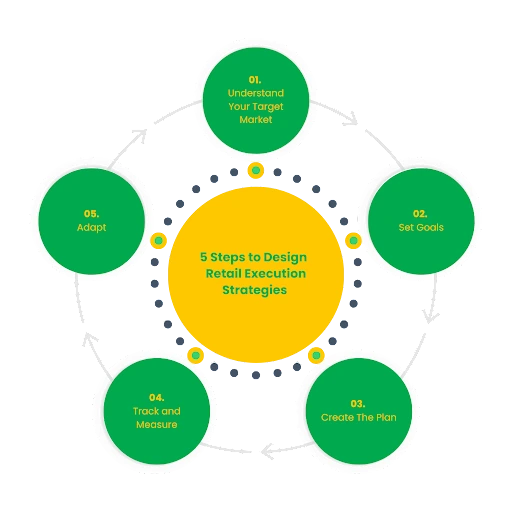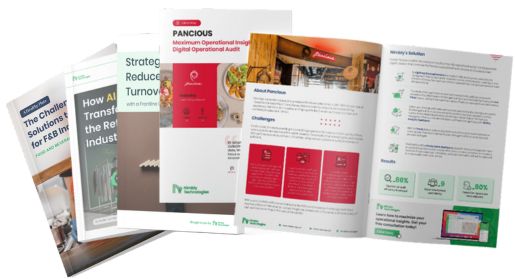

Retail execution refers to the process of ensuring that your products are displayed, priced, and promoted effectively in retail stores. It’s a critical component of any successful retail strategy, and it is increasingly important in today’s competitive market.
To craft the perfect retail execution strategy, you’d need to start by understanding your target market; how they shop, how they behave, and what they actually would want and need from you. Once you’ve got a good understanding of your customers, then you can develop a strategy that tailors your products, services, and promotions to their specific needs.
In this blog, we’ll be covering 5 tips to create a fool-proof Retail Execution Strategy:

The first step to crafting a successful retail execution strategy is to understand your target market and the retail channels they shop in. What are their needs and wants? Where do they shop? What are their buying habits? The better you understand your customers, the better you can tailor your retail execution strategy to their needs.
You can utilize surveys, interviews, website analytics, and CRM data to figure out the needs and wants of your customers. Understanding what your customers want is just the first step - you should also consider where your customers shop to maximize the effectiveness of your retail strategy. Whether it be in brick-and-mortar stores, e-commerce, or both, this information will help you craft a retail experience perfect for your customers.
What do you want to achieve with your retail execution strategy? Do you want to increase sales, launch a new product, or improve brand awareness? Once you know your goals, then it will be easier to develop a plan to achieve them.
Here are some examples of retail execution goals:
Once you have set your goals, it will be easier to set an action plan to achieve them. For example, let’s say that your goal is to increase sales by 10% in the next quarter, then your plans could include:

Now that you have your customer information and goal, it’s time to jot down the details of your strategy. This should include everything from product placement, pricing, promotions, and merchandising. At this stage, it’s important to be as specific as possible and to provide your team with detailed guidelines to ensure that everything is where it needs to be at all times.
Here are some key elements of a successful in-store execution plan:
The work doesn’t end here - once you’ve executed the plan, it’s important to see what’s working and what’s not so you can plan better for the future. Additionally, this will help you to make adjustments to your strategy as needed.
Here are some key metrics you might want to track:
As you might know, the retail landscape is always changing, so it’s important to be adaptable and flexible with your retail execution strategy. Be prepared to make changes as needed to achieve your goals.
Here are some tips for being flexible and adaptable:
By following these steps, you can craft a retail execution strategy that will help you achieve your business goals.
Here are some additional tips for crafting the perfect retail execution strategy:
You can use technology to your advantage. Several software solutions can help you execute promotions seamlessly in all your stores. For example:
